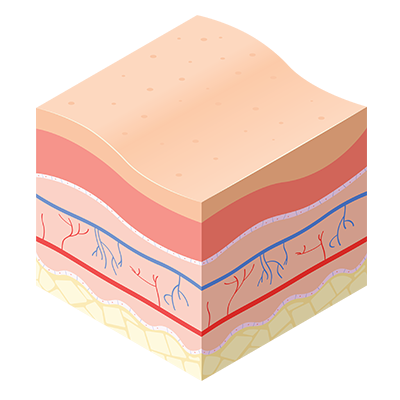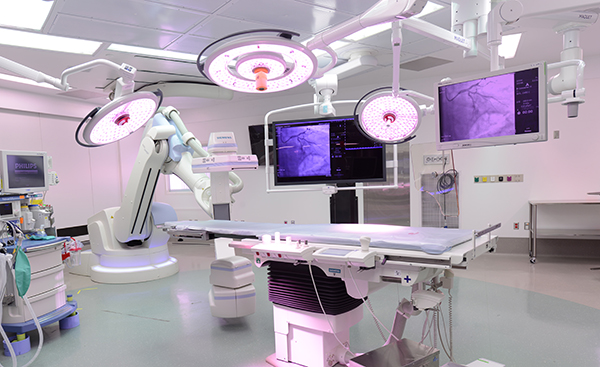
About Skin Cancer
Your skin is your body's largest organ and is the most vulnerable to the sun. Overexposure to sunlight can lead to the most common type of cancer: skin cancer. It develops when there is an out-of-control growth of abnormal cells in the outermost layer of skin (epidermis).
The good news is that some skin cancers may only need to be treated through minor surgery or by directly applying medicine to the skin.
Still, a cancer diagnosis is never easy to hear. We do all we can to ease your concerns by providing you with a team that’s experienced in treating every form of skin cancer. Whether it’s an aggressive type or more easily treated, our cancer specialists and support team treat you with the same expertise and compassion.
Types of Skin Cancer and Melanoma
- Basal cell carcinoma. The most common form of skin cancer. It is most often found on areas of the body that are exposed to the sun. This type of cancer rarely spreads to other parts of the body.
- Squamous cell carcinoma. This develops on sun-exposed skin but may even appear where sun exposure is minimal, such as the inside of the mouth. Squamous cell carcinoma is more likely to develop in damaged skin.
- Melanoma is much less common than the other types but much more likely to invade nearby tissue and spread to other parts of the body. Most deaths from skin cancer are caused by melanoma.
Diagnosing Skin Cancer and Melanoma
Our cancer pathologists and oncologists are experts in diagnosing skin cancer.
- Physical exam. You may first have an exam of your body to check for signs of disease, including lumps or anything else that seems unusual.
- Skin exam. We will examine your skin for bumps or spots that look abnormal in size, color, texture, or shape.
- Skin biopsy. Any abnormal-looking growths will be removed from the skin. A pathologist will view the sample under a microscope to check for signs of cancer.
- Imaging tests. These tests may be done if your doctor decides you’re at risk for the cancer spreading. That’s when CT or MRI scans of the area could be done.

Treating Skin Cancers and Melanoma
You can count on our experienced care team — we understand and deal with the complexities of skin cancers every single day. We’ll help you make informed decisions about treating your condition. There’s a unique person under your skin who deserves a unique treatment to help bring your skin back to a healthy state. Treatments may include (in alphabetical order):
- Chemotherapy (chemo). This treatment uses a drug that stops or slows the growth of cancer cells. Not only is chemo used to treat cancer, but it can also help ease symptoms since it shrinks painful tumors. In many cases, chemotherapy is the only treatment used. It can also help other treatments work better, or it can be used after surgery to destroy any cells that may remain.
- Cryosurgery. This procedure involves spraying an extremely cold substance, such as liquid nitrogen, on the cancer. This method of “freezing” the tumor destroys it.
- Immunotherapy. Your immune system protects your body from illness and harmful foreign substances. Immunotherapy is just one form of precision medicine we offer that boosts your body's immune system - helping it recognize and attack cancer cells.
- Photodynamic therapy. It injects a light-sensitive substance into the tumor that stays longer in cancer cells than in healthy cells. A laser can then be directed to find the tumor and destroy the cancer cells.
- Radiation therapy. There are different types of radiation therapy used to treat skin cancers. Some use beams of radiation that are directed just beneath the skin to treat only the tumor. Others use high-energy beams of radiation that are sent into the tumor to kill cancer cells. Another therapy places radioactive implants inside or near the cancer.
- Skin grafting and reconstruction. Sometimes larger wounds from surgical treatments for skin cancer require two basic repair procedures to the skin: skin flaps and grafts. They both attach sections of skin from one part of the body to the post-surgical wound.
- Surgical removal. The type of surgery you have is based on where the tumor is located, what kind of cancer you have, and how deeply it goes into the body.
- Excision. This cuts out the skin cancer and an area of normal-looking skin around it to be examined under a microscope.
- Curettage and electrodessication. The cancerous area is scraped from your skin with curetting. Next, electrodesiccation uses heat to destroy any remaining cancer cells.
- Targeted therapy. This treatment uses drugs or other substances to find and attack specific cancer cells. These therapies are not usually as harmful to normal cells as chemotherapy or radiation therapy.



